Ansel Adams
is one of the most truly famous photographers that ever existed. Ask any truck driver who Mario Testino is, and he’ll look at you perplexed. (or Terry Richardson or Avedon, etc.) But ask them who Ansel Adams is, and they’ll say, “He was that photography guy.” My point being, you don’t have to be a photographer, or in the “industry” to know who Ansel Adams is. Hence, real fame.
He is best remembered as a master of black and white photography.And if they had the Sierra Club back then, he would have sat on the board of directors!. This is the man who invented the Zone System, still used to this day. The Zone System basically determined proper exposure of the negative and contrast of the final print. Adams was nothing if not the greatest teacher of the importance of sharpness and how to achieve it. And he loved his large format cameras and high f stops. He is also known for being a co-founder of Group f/64.
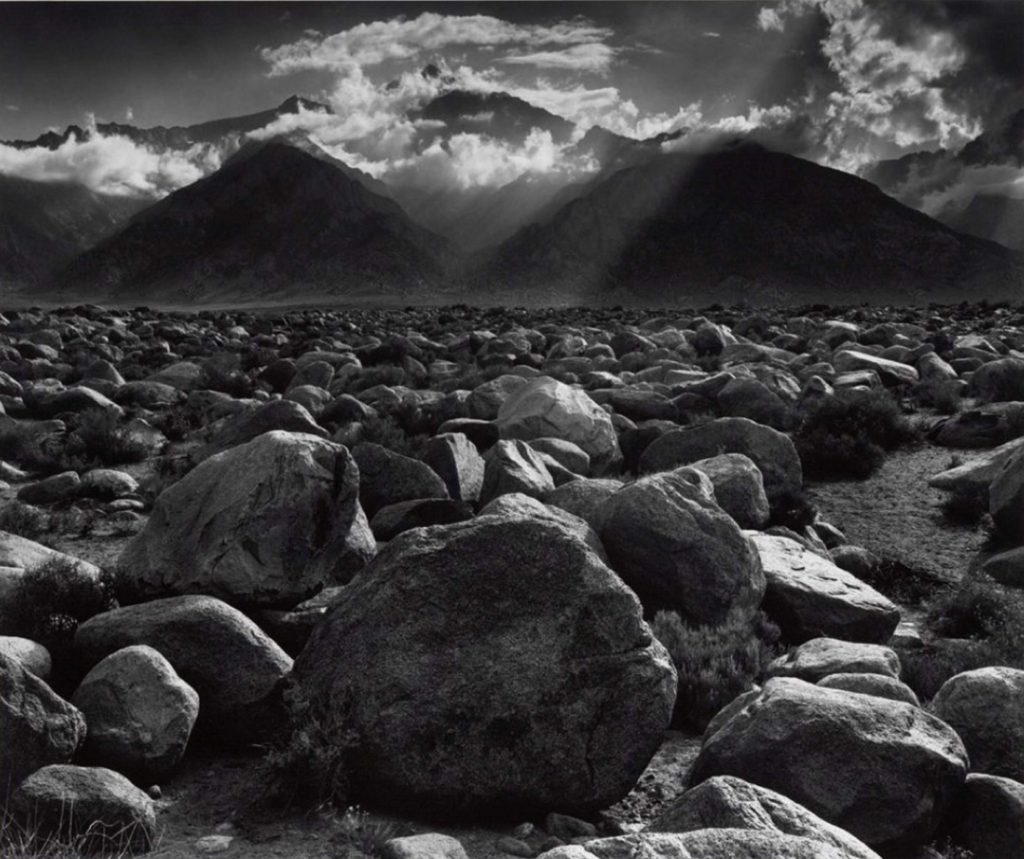
Ansel Adams – A Spotty Childhood
Adams was born in 1902 in San Francisco, to a well to do lumber baron, of all things. His love of nature,…especially trees, precluded his desire to follow in Daddy’s footsteps. He had a deep felt belief that no redwood tree should ever be cut down.
As a child, he was part of the 1906 San Francisco earthquake, and actually broke his nose in the event. They failed to fix it then, and he did not “outgrow” the broken nose, and lived with it his whole life.
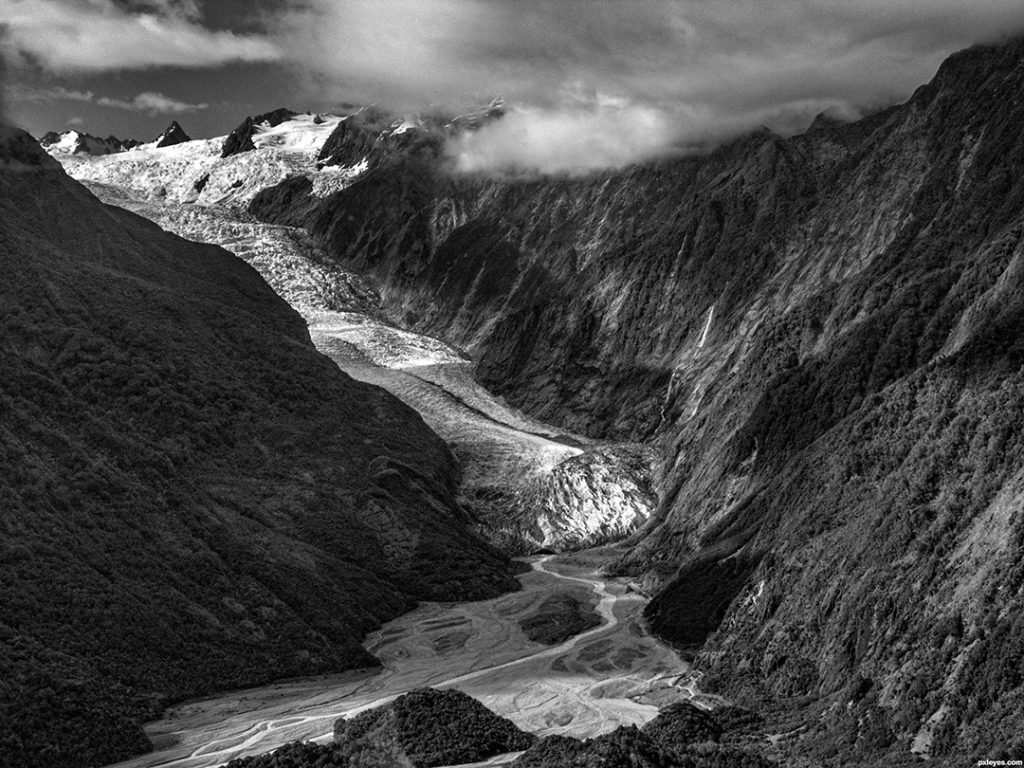
Due to stock market losses, by 1912 the family’s affluent lifestyle came to an end. While he loved playing the piano, he caught the photography bug at a young age. We know where that led. Most of the family, especially his mother, disapproved. Photography wasn’t even considered an art form back then. But it was his father who gave Ansel his first camera, a Kodak Brownie box camera. He attacked Yosemite, his favorite place on earth, with a vengeance.
In 1917 Adams paid his second visit to Yosemite. With better cameras and a tripod. Ansel Adams started learning darkroom techniques by working as a part-timer for a San Francisco photo finisher. He read every magazine, joined every photography club, and attended every photo exhibition he could find.

He lost some time with an extended illness in 1918, and was sidelined from his beloved hiking and camping. It was the year of the Spanish Flu epidemic, and he was hit particularly hard.
Still Young
It was 1921 when he was first published. He was only 19 years old! He worked at Best’s Studio, and they soon after started selling his prints. Pretty heady stuff for a 20 year old. His music career as a pianist began waning at this time, though he still worked as an accompanist or teacher for a while.
Alfred Stieglitz was trying to mimic painting at this time,…almost in an effort to make it ‘art’. But it was Ansel Adams who took a path that relied on sharp focus and extended DOF, more contrast in printing, and very precise exposure,… bringing it all together in the darkroom. Almost as if rejecting the notion that photography’s unique pros were not enough to consider it art.
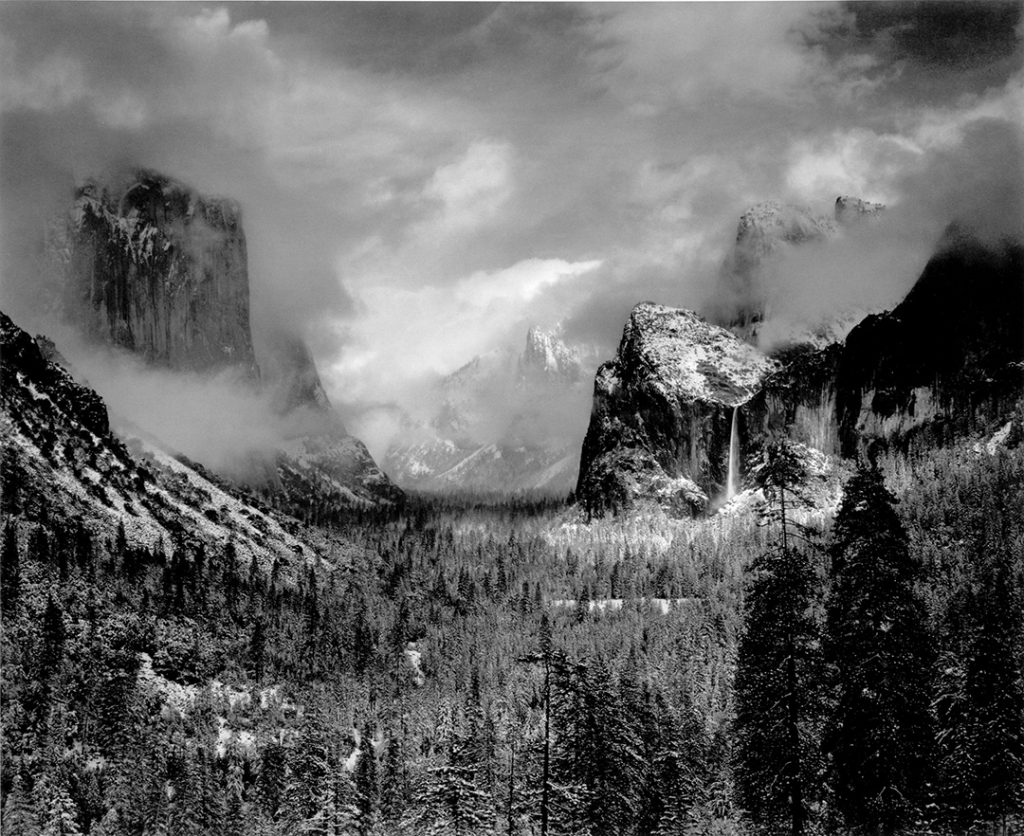
Minor Successes
In 1927 Ansel Adams made his first portfolio captured with his view camera using glass plates and a dark red filter and realized the world was ready to view his unique perspective and technical mastery. His first portfolio earned him $3,900,…a sizeable amount at the time. This led to some commercial assignments, yet he still felt his equipment and darkroom were lacking to achieve the perfection he sought.
In the 1930’s Adams’ released a second portfolio ‘Taos Pueblo’. Adams got introduced by Alfred Stieglitz to his circle of friends in New Mexico, including painter Georgia O’Keeffe, artist John Marin, and photographer Paul Strand.
In 1931 Ansel Adams had his first solo museum exhibition at the Smithsonian Institution. This exhibition of 60 prints were taken by Adams in the High Sierra. A review Of his work by the Washington Post made him a hit. But he grew restless and wanted to include different subject matter. He started using smaller and smaller apertures at this time, with very long exposures. Eventually he formed Group f/64 with Imogen Cunningham and Edward Weston. This group was formed to use photography in a manner as which not to emulate any other art form.

In 1933 Ansel Adams released ‘Rose and Driftwood’ which many regard as his finest and groundbreaking still life’s ever. While the Best’s Studio were struggling financially, he was able to keep it all afloat with numerous commercial clients during this period.
Re-Prints and Record Prices
In 1944, the New Mexico prints had an exhibition at the Museum of Modern Art, a resounding success. Prints of the ‘Hernandez’ photo were made in the 1970’s by Adams. The value of the original prints exceeds $25,000,000 which still holds the record for the worth of a single print. A single print by Adams sold for $609,600 at auction in 2006.
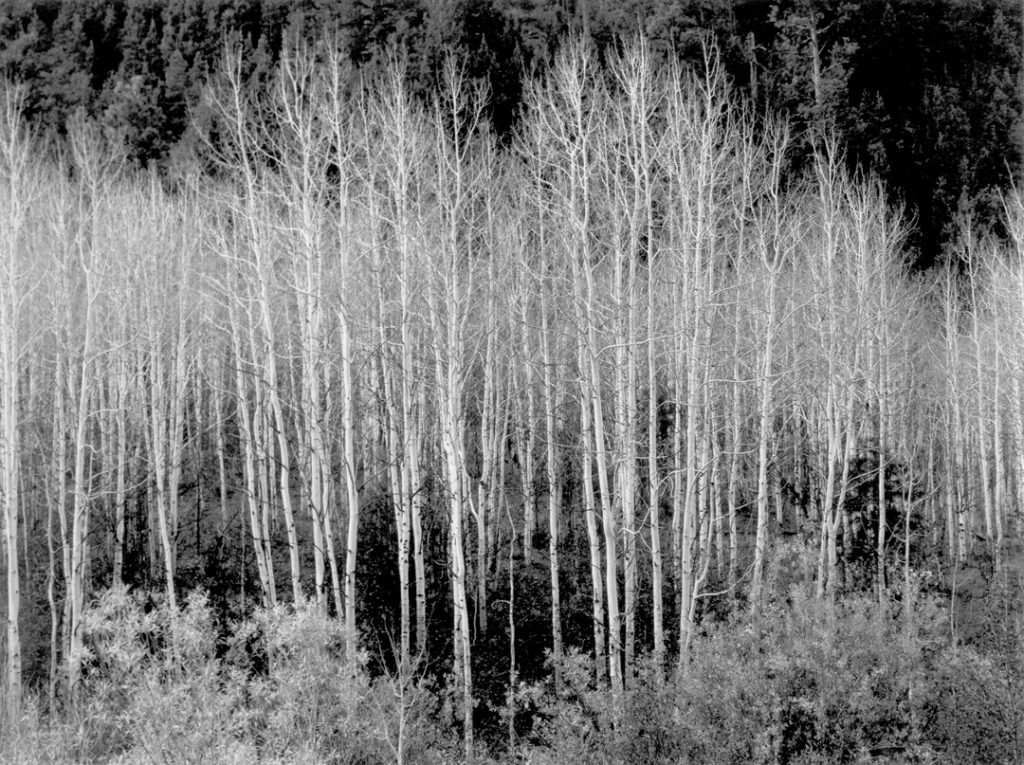
A Long Fruitful Life
The ‘Metropolitan Museum of Art’ held a major retrospective in 1974. In his later years he spent most of his time in the darkroom re-printing negatives to supply to art museums and auction houses. Ansel Adams died in 1984. To read a very detailed bio of his life, go to his website, still administered by family. Find 8×10 Camera
Website

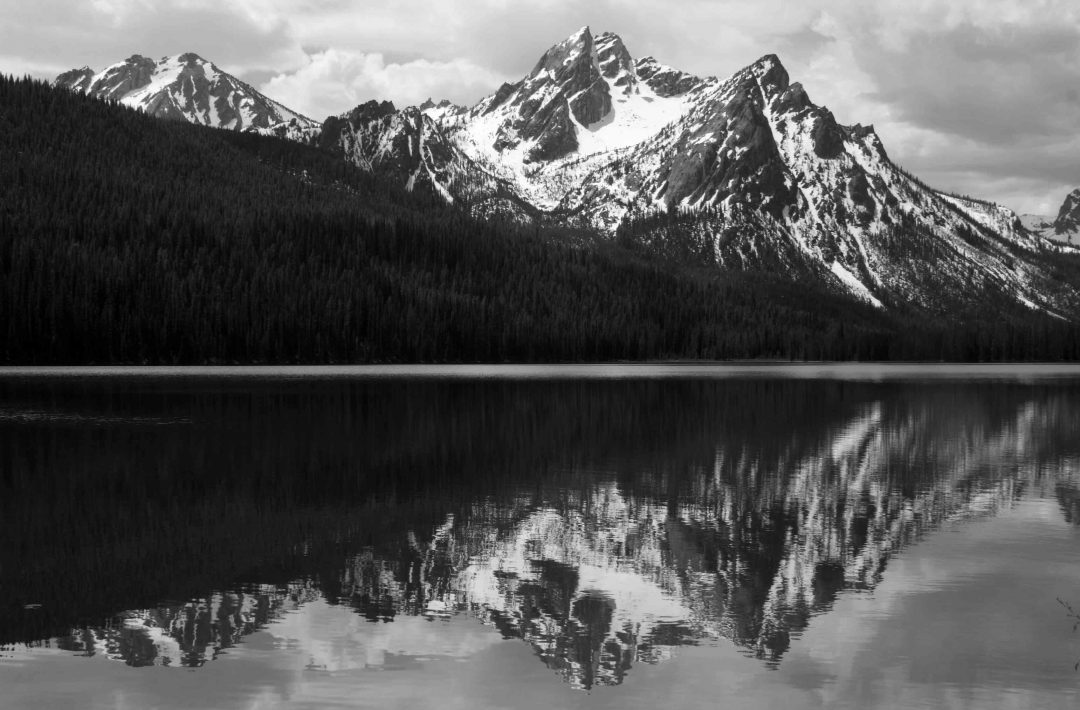
I believe the first photo is by Peter Essick’s.
Hi Joe
Sorry it took so long to respond, but I actually checked with 2 sources, including Katherine Gillis who spotted his actual prints. And you are right. That formerly displayed image belonged to Peter Essick. Thanks for catching the mistake.
Federico